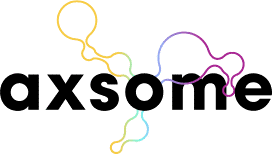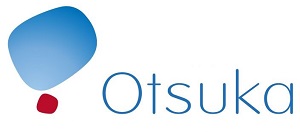Defining Agitation
Agitated, aggressive, frustrated, angry, stubborn, restless – adjectives that are often used interchangeably to illustrate comparable clinical presentations, but words that can bear very different meanings to different people. It is well documented in the literature that individuals with cognitive disorders regularly suffer from a plethora of neuropsychiatric sequelae during their illness course. Syndromes such as depression, anxiety, and agitation are common, and agitation is frequently considered the most disruptive as it is often associated with increased rates of institutionalization. Specific diagnostic criteria for depression and anxiety in certain cognitive disorders such as Alzheimer’s disease have been outlined in the literature. However, agitation remains an ambiguously defined term that is often muddled by the individual’s, caretaker’s, or provider’s interpretation of the clinical manifestations. Creating a standardized, validated diagnostic definition of agitation in individuals with cognitive disorders could prove beneficial to clinical and research environments seeking to advance treatment options, as well as, facilitate accurate communication among clinicians and patients and their support.
Recently a group of our colleagues at the International Psychogeriatric Association (IPA) formed an Agitation Definition Work Group (ADWG) to develop a provisional consensus definition of agitation in patients with cognitive disorders. Outlined in the article is a detailed recapitulation of how the ADWG formulated this provisional definition. The multi-step process started with a literature review of past definitions and common elements of definitions of agitation. A preliminary survey of these definitions and common elements was drafted and distributed to the IPA leadership. The ADWG reviewed the proposed survey, adding or deleting elements, and the revised survey (deemed Survey 1) was electronically sent to IPA membership and affiliate members to collect their opinions on elements of the definition including if it should be limited to cognitive impairment, key behavioral elements to be included in the definition, and whether agitation and aggression and anxiety and agitation are the same. Six thousand emails were sent and 557 individuals responded to Survey 1. After analysis of Survey 1 results, an international expert consensus meeting was held in which a preliminary draft definition was developed based on a review of the literature and information derived from the survey. The preliminary draft definition was disseminated to all members of the ADWG. Following many electronic exchanges, a final consensus was reached. To expand consensus beyond the ADWG, the preliminary draft definition was sent to other key groups, including the Neuropsychiatric Syndrome Professional Interest Area of ISTAART, for comment. A consensus was reached and the resultant provisional draft definition was re-sent to IPA members and affiliated members for additional input in the form of Survey 2. Three hundred and fifty responses were received in this phase. After analysis of Survey 2, the manuscript of the process and definition was prepared and eventually published in the International Psychogeriatrics Journal.
Recopied from that manuscript is the consensus provisional definition of agitation in cognitive disorders:
- The patient meets criteria for a cognitive impairment or dementia syndrome (e.g. AD, FTD, DLB, vascular dementia, other dementias, a pre-dementia cognitive impairment syndrome such as mild cognitive impairment or other cognitive disorder).
- The patient exhibits at least one of the following behaviors that are associated with observed or inferred evidence of emotional distress (e.g. rapid changes in mood, irritability, outbursts). The behavior has been persistent or frequently recurrent for a minimum of two weeks and represents a change from the patient’s usual behavior.
- (a) Excessive motor activity (examples include: pacing, rocking, gesturing, pointing fingers, restlessness, performing repetitious mannerisms).
- (b) Verbal aggression (e.g. yelling, speaking in an excessively loud voice, using profanity, screaming, shouting).
- (c) Physical aggression (e.g. grabbing, shoving, pushing, resisting, hitting others, kicking objects or people, scratching, biting, throwing objects, hitting self, slamming doors, tearing things, and destroying property).
- Behaviors are severe enough to produce excess disability, which in the clinician’s opinion is beyond that due to the cognitive impairment and including at least one of the following:
- (a) Significant impairment in interpersonal relationships.
- (b) Significant impairment in other aspects of social functioning.
- (c) Significant impairment in ability to perform or participate in daily living activities.
- While co-morbid conditions may be present, the agitation is not attributable solely to another psychiatric disorder, suboptimal care conditions, medical condition, or the physiological effects of a substance.
In the article, the authors address several important points in the presentation of this provisional definition. They acknowledge that the definition is a consensus rather than a unanimous agreement and that the definition is provisional as future validation studies may actuate its modification. As with any new concept, there are bound to be some controversial areas. The investigators recognize and respond to some of these, such as the need for validation, the relationship of agitation to aggression, and the independent syndromal definition as opposed to defining agitation as a complication of another syndrome. Also, although agitation can be experienced across a wide range of neuropsychiatric illnesses, this definition was limited to individuals with cognitive disorders as the authors felt that agitation in this population may present differently than agitation seen in other neurological or psychiatric illnesses, similar to the variable presentations of depression and psychosis between these groups.
This article sets the stage for future discussion of this very important topic. There is a desperate need for treatment options (pharmacologic and non-pharmacologic) for agitation in the cognitively impaired. Establishing a standard diagnostic definition for agitation that is not dependent on a rating scale and that can be used to define a precise population is necessary to move forward proper research and clinical studies.
References: Cummings J, Mintzer J, Brodaty H, Sano M, Banerjee S, Devanand DP, Gauthier S, Howard R, Lanctôt K, Lyketsos CG, Peskind E, Porsteinsson AP, Reich E, Sampaio C, Steffens D, Wortmann M, Zhong K. Agitation in cognitive disorders: International Psychogeriatric Association provisional consensus clinical and research definition. Int Psychogeriatr. 2014 Oct 14:1-11.
Nicole Stocking, MD, Senior Resident in the Department of Psychiatry at the Medical University of South Caroline, United States
Excerpted article as reprint from IPA’s newsletter, the IPA Bulletin, Volume 31, Number 4









